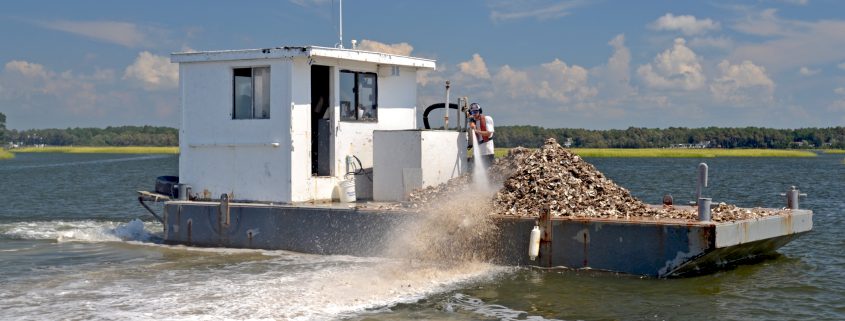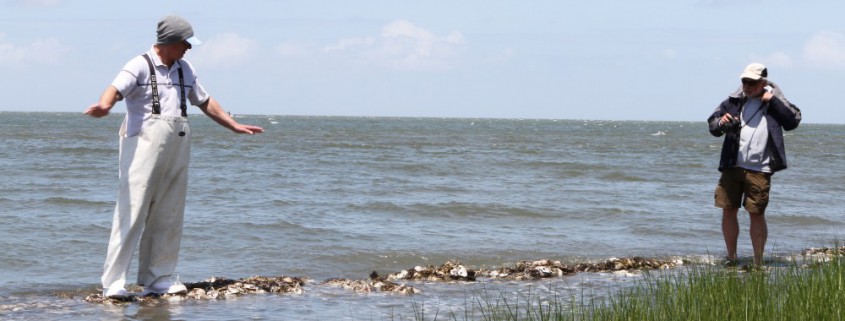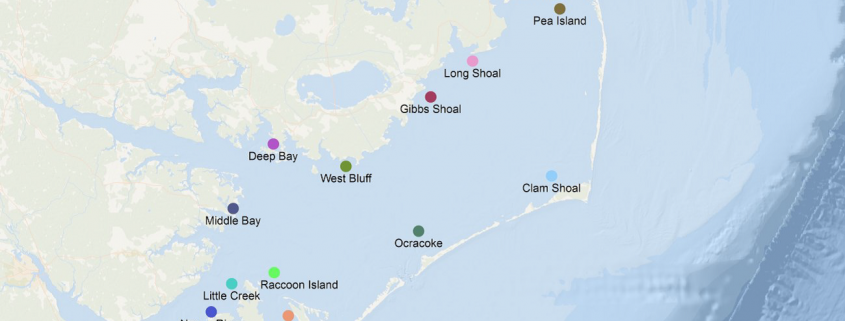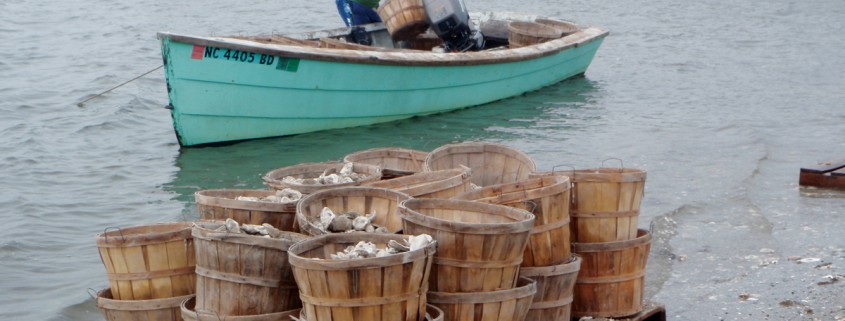Due to the many ecological and economic benefits that oysters provide, state departments, non-governmental organizations and other interest groups work hard to maintain and restore the native oyster population. This page explores commonly used oyster restoration techniques and shows oyster restoration work implemented in the past year.

Cultch Planting
To create reefs, the N.C. Division of Marine Fisheries annually deposits tens of thousands of bushels of oyster shell, marine limestone and/or clam shell — collectively called “cultch” — in shellfish waters from the Shallotte River to the Pamlico Sound. The division enhances oyster habitat in harvest areas by spreading cultch, which is colonized by oyster larvae (called the uninspiring name “spat”) that attach to the cultch and grow to three-inch harvest size in 18 to 24 months. These cultch planting sites are open to public harvest once oysters reach legal harvest size (3 inches). In 2015, the division planted 210,272 bushels of cultch on 41 acres.

Oyster Patch Reefs
Patch reefs and living shorelines are typically smaller scale restoration efforts carried out by NGOs, universities or concerned community members. The reefs created are typically not open to harvest and range in size from a tenth of an acre to two acres. These reefs, built in carefully selected areas, are constructed of shell, marl, concrete, reef balls or other suitable material. In recent years, the Institute for Marine Sciences and the North Carolina Coastal Federation have experimented with using up-cycled crab pots coated in concrete to restore oysters.

Sanctuaries
Larger scale oyster sanctuaries are constructed throughout North Carolina’s sounds. These sanctuaries serve as marine protected areas that are typically closed to oyster harvest, but open to hook and line fishing. They are strategically located and designed to improve the wild stock of oysters by creating broodstock sanctuaries that connect larvae throughout the sound.

Oyster Mariculture
Oyster farming or aquaculture is not always seen as a method of restoration because the oysters will eventually be harvested. However, oyster leases provide numerous ecological benefits including increased water filtration, additional habitat for other fish and other ecosystem services such as nitrogen sequestration. More oysters in the water equates to cleaner waters. Additionally, oyster growers that use diploid oysters in their farming operations contribute to the wild stock when the matured oysters release their free floating larvae (spat) into surrounding waters. This produces a more robust wild oyster population.

